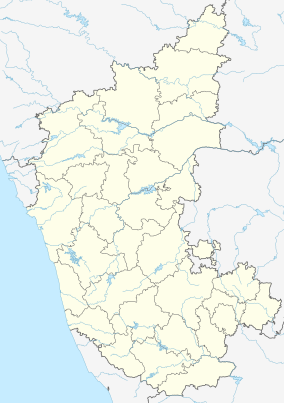See Bangalore City, Sampangirama Nagar, on the map
Directions to Bangalore City (Sampangirama Nagar) with public transportation
The following transit lines have routes that pass near Bangalore City
Bus:
Metro:
How to get to Bangalore City by Bus?
Click on the Bus route to see step by step directions with maps, line arrival times and updated time schedules.
How to get to Bangalore City by {{TRANSIT_TYPE}}?
Click on the {{TRANSIT_TYPE}} route to see step by step directions with maps, line arrival times and updated time schedules.
How to get to Bangalore City by Metro?
Click on the Metro route to see step by step directions with maps, line arrival times and updated time schedules.
Which Bus lines stop near Bangalore City?
These Bus lines stop near Bangalore City: 293K, 304A, 309, K-6, KIAS-7
Which Metro lines stop near Bangalore City?
These Metro lines stop near Bangalore City: PURPLE LINE (ನೇರಳೆ ಮಾರ್ಗ)
See Bangalore City, Sampangirama Nagar, on the map

Public Transit to Bangalore City in Sampangirama Nagar
Wondering how to get to Bangalore City in Sampangirama Nagar, India? Moovit helps you find the best way to get to Bangalore City with step-by-step directions from the nearest public transit station.
Moovit provides free maps and live directions to help you navigate through your city. View schedules, routes, timetables, and find out how long does it take to get to Bangalore City in real time.
Bus:Metro:
Want to see if there’s another route that gets you there at an earlier time? Moovit helps you find alternative routes or times. Get directions from and directions to Bangalore City easily from the Moovit App or Website.
We make riding to Bangalore City easy, which is why over 1.5 million users, including users in Sampangirama Nagar, trust Moovit as the best app for public transit. You don’t need to download an individual bus app or train app, Moovit is your all-in-one transit app that helps you find the best bus time or train time available.
For information on prices of Bus and Metro, costs and ride fares to Bangalore City, please check the Moovit app.
Use the app to navigate to popular places including to the airport, hospital, stadium, grocery store, mall, coffee shop, school, college, and university.
Location: Sampangirama Nagar, Bengaluru

Attractions near Bangalore City
How to get to popular attractions in Sampangirama Nagar with public transit
- Thyagarajanagar, Basavanagudi
- Sigma Mall, Vasantha Nagar
- Sri Sagar (Formerly CTR), Dattatreya Temple
- Bangalore, Richmond Town
- Rasta Cafe, Bengaluru
- Coles Park, Pulikeshi Nagar
- Wipro Technologies, Bengaluru
- Vidyapeeta Circle, Basavanagudi
- Banashankari BDA Shopping Complex, Ganesh Mandir
- Kumaraswamy Layout, Padmanabha Nagar
- Marathahalli Bus Stop, Bengaluru
- Yeshvantpur Railway Station (YPR), Jalahalli
- Mockaholic Restro Beer Cafe, J.P.Nagar
- Chairmans Club and Resort, Bengaluru
- Anand Rao Circle, Gandhi Nagara
- Sanjaynagar, Sanjay Nagar
- Indian Institute of Management Bangalore (IIMB), Bengaluru
- The Chancery Pavilion Hotel, Richmond Town
- Koramangala 1st Block, Madivala
- Richmond Town, Richmond Town